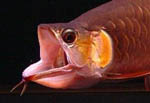|
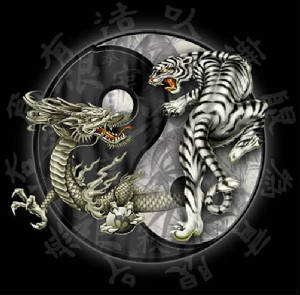
Introduction
All info and pictures are taken from internet
Arowana often known as Dragon Fish.
Scientifically known as Scleropages Formosus.
Arowanas come from rivers of South America, Southeast Asia,Africa and Austraila. Cross Back Golden from West Malaysia,
Super Red from Indonesia's West Kalimantan, Red Tail Golden from Indonesia Pekanbaru and the Green variety, which can be found
in rivers of Malaysia, Indonesia, Myanmar and Thailand.
Its popularity and great demand, have been fiercely hunted at its native habitat for profits, thus the population of
these fish in the wild has declined especially for Malaysian Golden Arowanas and Red Arowanas, which have reached a stage
of near extinction since 1980s.
Arowanas was then come under protection by the listing of the Convention on the International Trade in endangered species
of Wild Fauna and Flora (CITES) and are classified as an endangered species.
CITES is the "Convention on International Trade in Endangered Species"
__________________________________________________________________
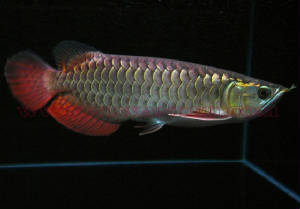
This is found in Malaysia and sometime called Malayan Bonytongue. It has golden scales to the fourth column and pinkish
abdomen when young. When the fish grow up, the golden scales willl escalate to the fifth column(hence cross-back) and the
pink abodomen disappear. The scales may have different basecolor such as gold, silver or blue. Blue being the rarest. The
scales can also divided into thin or thick golden frame. Thin frame scales bluebase crossback gold are one of the most demanded
arowana and hence often the most expensive.
__________________________________________________________________
Grade 1 Red

Red Arowana is found in Kalimantan and Sumatra of Indonesia. 1st grade red can have different intensity of color ranging
from yellow to orange to red to blood-red and chilli-red. The higher intensity red is more desirable and often demand very
high price. It is often difficult to diffferentiate 1st grade red from 2nd grade red when the fish is young.
Young 1st grade red's tail and anac fin have intense red color and their scales are shiny gold in color with some green
at the base. Young 2nd grade red has orange fins and the scales color are no obvious and often whitish silver. When the fish
grows, in 1st grade red, the color of the fins remains red, their scales and the gill cover will develop its color. Ther type
of color it will developed into depends on which type of 1st grade red you have. On the other hand, the adult 2nd grade red
will only have pinkish or orange colored fins, thier scales and gill color will only developed pink or orange color.
___________________________________________________________________________________________________
Red-Tail Golden Arowanas
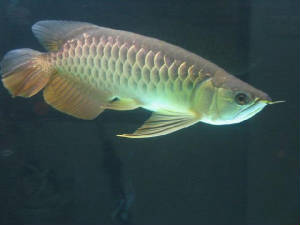
This is found in Pekanbaru of Indonesia. The scales are copper-gold in color with some purplish shine. The back of the
fish are dark in color, ranging grey, brown to black. The tail color have 1/3 to 2/3 divisions, the top 1/3 are dark in color
and the bottom 2/3 have purplish-red to brownish-red color. The dorsal(back) fin and the caudal(near the anus) fin color follow
the 1/3 and 2/3 of the tail color respectively.
_____________________________________________________________________________________
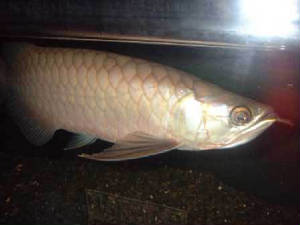
Green Arowana is found in Malaysia, Indonesia and Thailand. The scales are not bright and often tranlucent with some
grey or green color. The color is even throughtout the body(ie no dark-top). The tail can be grey, purplish-grey or green
in color. This fish is generally shorter then its Asian relatives.This is one of the most affordable asian arowana.
|
